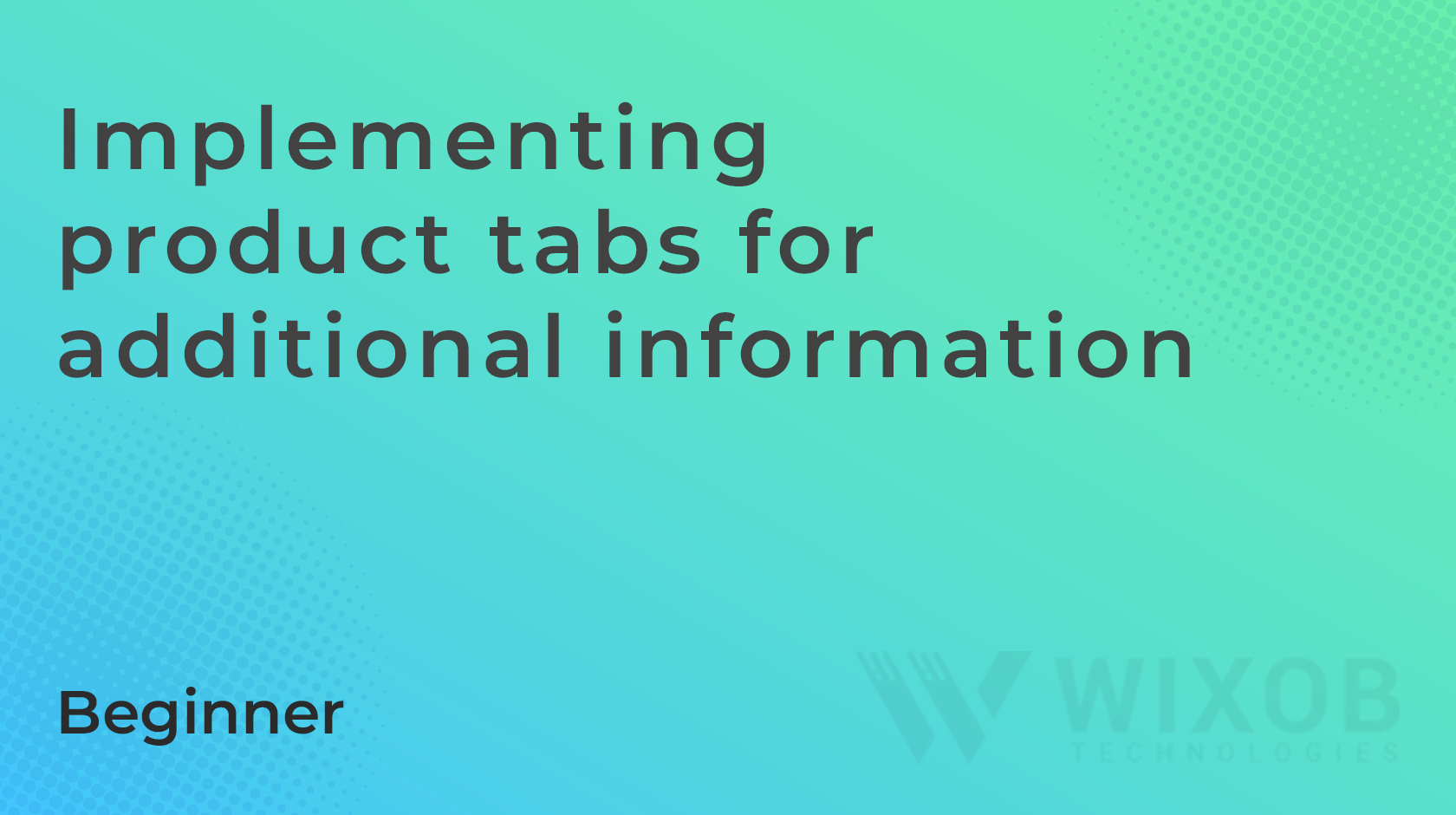In the world of e-commerce, providing comprehensive product information is essential for engaging customers and driving conversions. However, presenting a large amount of information in a user-friendly way can be challenging. Product tabs offer an effective solution by organizing information into easily navigable sections, improving the user experience and increasing the likelihood of purchase. In this guide, we’ll explore how to implement product tabs for additional information in your Shopify store using theme code customization techniques. By leveraging these techniques, you can enhance your product pages and provide valuable information to your customers.
Chapter 1: Understanding the Importance of Product Tabs
Before diving into the technical details, let’s discuss why product tabs are essential for your Shopify store. Product tabs allow you to organize and present various types of information, such as product details, specifications, reviews, and FAQs, in a structured and easily accessible format. By condensing information into tabs, you can streamline the user experience, reduce clutter on product pages, and improve overall usability, leading to increased engagement and conversions.
Chapter 2: Assessing Product Tabs Requirements
The first step in implementing product tabs is to assess your specific requirements and objectives. Determine the types of information you want to include in the tabs, such as product descriptions, specifications, shipping information, and customer reviews. Consider factors such as relevance, importance, and user preferences when planning the content for your product tabs.
Chapter 3: Designing the Product Tabs Interface
With a clear understanding of your product tabs requirements, it’s time to design the interface for the product tabs within your Shopify store. Sketch out wireframes or mockups illustrating how the product tabs will be displayed and styled. Consider factors such as layout, typography, color scheme, and navigation to create an intuitive and visually appealing tabbed interface for presenting product information.
<!-- Example HTML for the product tabs -->
<div class="product-tabs">
<ul class="tab-list">
<li class="tab-item active">Description</li>
<li class="tab-item">Specifications</li>
<li class="tab-item">Reviews</li>
<!-- Add additional tabs as needed -->
</ul>
<div class="tab-content active">
<!-- Description tab content -->
<p>Product description goes here...</p>
</div>
<div class="tab-content">
<!-- Specifications tab content -->
<ul>
<li>Specification 1</li>
<li>Specification 2</li>
<!-- Add more specifications as needed -->
</ul>
</div>
<div class="tab-content">
<!-- Reviews tab content -->
<p>Customer reviews go here...</p>
</div>
</div>/* Example CSS for styling the product tabs */
.product-tabs {
/* Styles for the product tabs container */
}
.tab-list {
/* Styles for the tab list */
}
.tab-item {
/* Styles for individual tab items */
}
.tab-content {
/* Styles for tab content */
}Chapter 4: Implementing Product Tabs with Theme Code
Once you’ve designed the product tabs interface, it’s time to implement it into your Shopify theme using theme code customization techniques. Utilize HTML, CSS, JavaScript, and Liquid to create the necessary functionality and integrate the product tabs seamlessly into your product pages. We’ll explore step-by-step instructions for coding the product tabs and optimizing them for performance and user experience.
{% comment %}
Example Liquid code for implementing product tabs in Shopify theme
{% endcomment %}
<div class="product-tabs">
<ul class="tab-list">
{% for tab in product_tabs %}
<li class="tab-item {% if forloop.first %}active{% endif %}">{{ tab.title }}</li>
{% endfor %}
</ul>
{% for tab in product_tabs %}
<div class="tab-content {% if forloop.first %}active{% endif %}">
{{ tab.content }}
</div>
{% endfor %}
</div>// Example JavaScript for handling tab switching functionality
document.addEventListener('DOMContentLoaded', function() {
const tabItems = document.querySelectorAll('.tab-item');
const tabContents = document.querySelectorAll('.tab-content');
tabItems.forEach((item, index) => {
item.addEventListener('click', () => {
tabItems.forEach((item) => {
item.classList.remove('active');
});
tabContents.forEach((content) => {
content.classList.remove('active');
});
item.classList.add('active');
tabContents[index].classList.add('active');
});
});
});Chapter 5: Testing and Optimization
After implementing product tabs, it’s essential to thoroughly test their functionality and usability across different devices, screen sizes, and browsers. Ensure that the tabs are displayed correctly on product pages, and that the content switches smoothly between tabs. Optimize the product tabs for performance and user experience, making adjustments as needed based on user feedback to improve overall engagement and conversion rates.
Chapter 6: Conclusion
Implementing product tabs for additional information is a strategic way to enhance the user experience and provide valuable information to your customers in your Shopify store. By leveraging theme code customization techniques and organizing product information into tabs, you can streamline the browsing experience, reduce clutter, and increase engagement and conversions. With the guidance provided in this guide, you’ll be well-equipped to implement product tabs effectively and drive success for your e-commerce business.

Leave a Reply